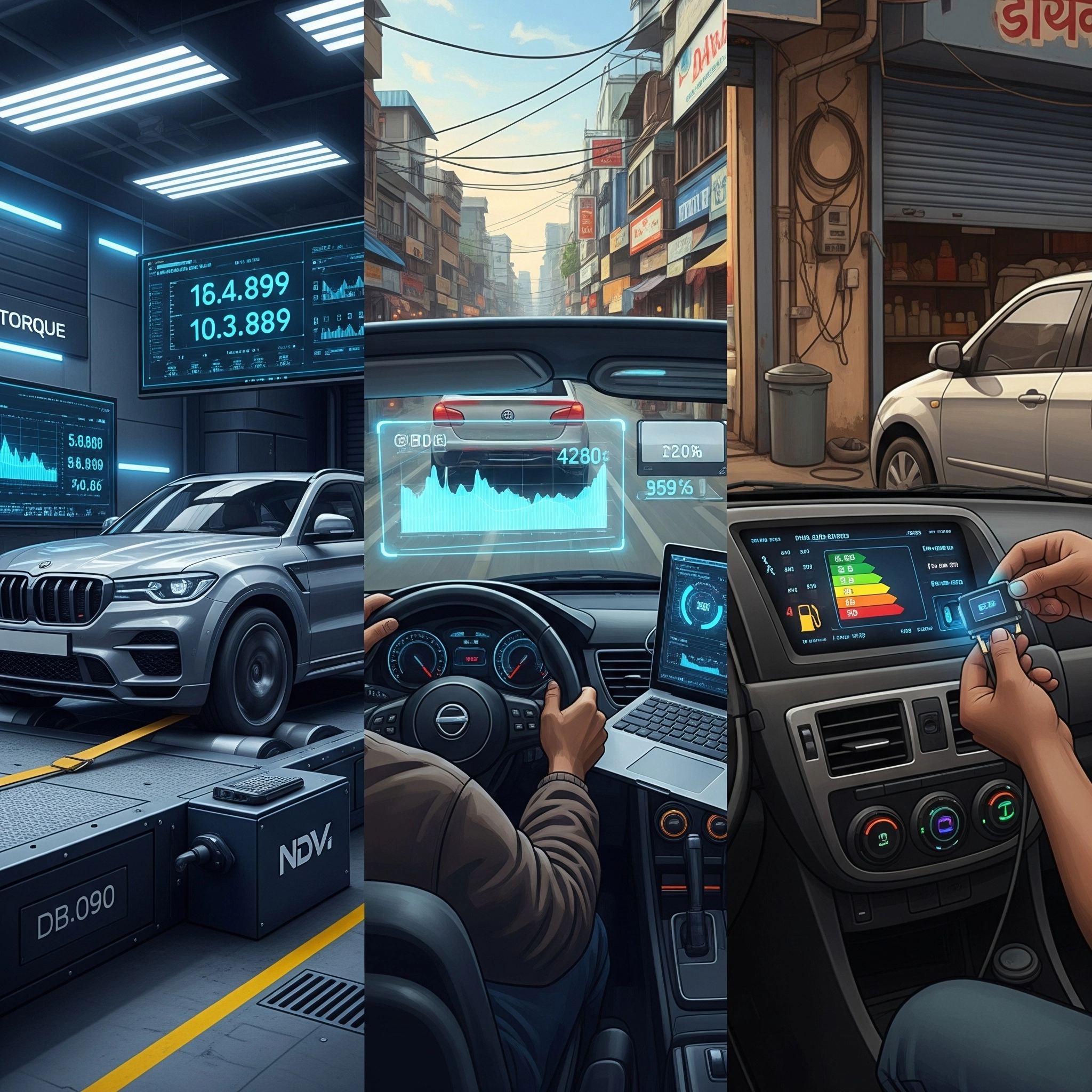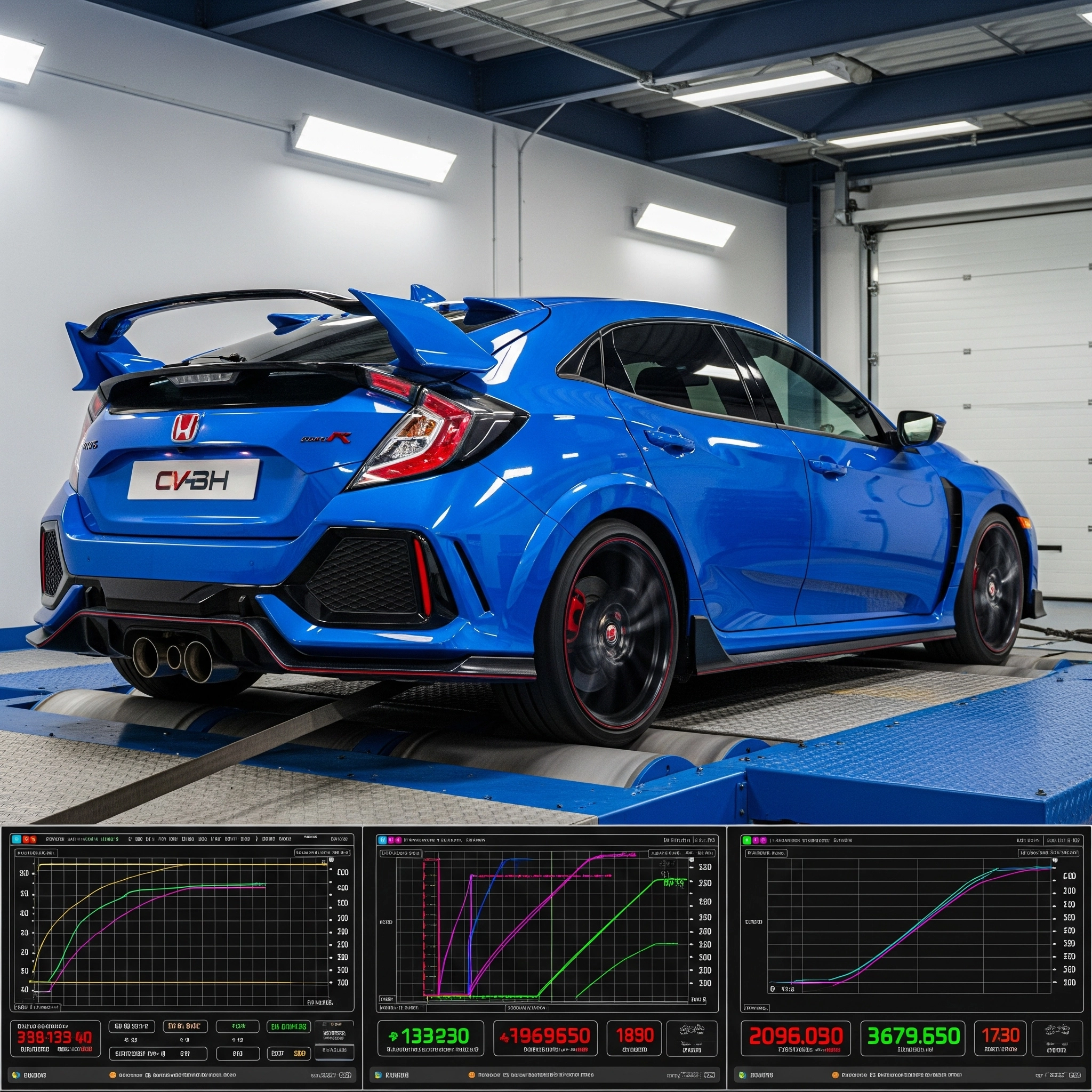Introduction
Car tuning methods in India have evolved from basic mechanical tweaks to advanced ECU reprogramming. Today, enthusiasts and everyday drivers can choose from dyno tuning, street tuning, and chip tuning—each offering distinct advantages. This guide helps you compare these tuning options and pick the one that fits your car and driving needs.
What Is Vehicle Tuning?
Vehicle tuning involves modifying the Engine Control Unit (ECU) to change how the engine performs. These changes help improve power, efficiency, and drivability.
Key ECU Parameters Typically Adjusted:
Fuel Maps – Manage air-fuel ratios across different loads and RPMs
Ignition Timing – Controls spark plug firing
Boost Control – Adjusts turbo/supercharger pressure
Rev Limiters – Set engine RPM caps
Torque Management – Manages power delivery for drivetrain safety
Shift Points – Used in automatic transmissions
Idle Speed – Adjusts engine speed at standstill
Common Tuning Goals
Increase horsepower and torque
Improve throttle response and drivability
Enhance fuel economy, especially in urban conditions
Calibrate ECU for aftermarket parts
Comply with BS6 emission regulations
Dyno Tuning: Precision Performance in a Controlled Setting
How It Works:
Vehicle is placed on a chassis or engine dynamometer
Baseline performance is measured
A professional tuner adjusts the ECU using specialized software
The process is repeated with refined settings
Final runs verify results and safety
Types of Dynos in India:
Chassis Dynamometers:
Measure power at the wheels
Cost: ₹5,000–₹10,000/session
Available in major cities like Bangalore, Mumbai, and Delhi
Engine Dynamometers:
Measure crankshaft power
Available at race facilities (BIC, MMSC)
Requires engine removal; used for engine development
Advantages:
Accurate horsepower and torque figures
Controlled environment reduces variability
Ideal for turbocharged and heavily modified engines
Identifies tuning issues before road testing
Limitations:
High cost (₹40,000–₹1,20,000)
Requires access to specialized facilities
Not representative of real-world driving
Time-intensive (half-day or more)
Best For: Race vehicles, custom builds, or those needing exact calibration.
Street Tuning: Real-World Results
How It Works:
ECU connects to a laptop or mobile device
Data is logged while driving in real conditions
Tuner analyzes performance and adjusts parameters
Several driving sessions are performed to optimize maps
Common Equipment Used in India:
OBD-II Adapters: Tactrix OpenPort 2.0, ELM327
Software: HP Tuners, ECUX, TunerPro
Wideband Sensors: AEM UEGO, INNOVATE LC-2
Datalogging Apps: Torque Pro, OBD Fusion
Knock Detection Tools: Autel, Knock ears
Advantages:
Matches tuning to actual fuel and road conditions
More affordable than dyno tuning
Allows ongoing refinement based on driving behavior
Ideal for Indian driving styles and terrain
Limitations:
Cannot quantify exact power increases
Testing on public roads may raise safety concerns
Inconsistent conditions (traffic, weather) affect results
Time-consuming across multiple sessions
Best For: Daily drivers, moderate mods, or budget-conscious enthusiasts.
Chip Tuning: Quick and Easy Power Gains
How It Works:
ECU Reflash: Software is overwritten with performance parameters
Piggyback Modules: Modify sensor readings before they reach ECU
Plug-in Devices: Install into OBD port to change performance
Replacement Chips: Used on older cars with removable memory chips
Available Products in India:
Handheld Tuners: Race Dynamics, Quantum India
Modules: RaceChip, Unichip, Pete’s Tuned ECU
Flash Tuning Services: Motormind, Red Rooster, Wolf Moto
Advantages:
Fast installation (15–60 minutes)
No technical knowledge required
Reversible—ideal for leased vehicles
Affordable compared to custom tuning
Limitations:
Generic maps may not be ideal for your specific car or conditions
Limited flexibility and customization
Varying quality between brands
Less effective for modified vehicles
Best For: Stock vehicles, beginners, and cost-sensitive users.
Dyno vs Street vs Chip Tuning – At a Glance
| Feature | Dyno Tuning | Street Tuning | Chip Tuning |
|---|---|---|---|
| Precision | High | Medium-High | Low |
| Cost (₹) | 40,000–1,20,000+ | 20,000–35,000 | 10,000–35,000 |
| Time Required | 1 day | Multiple sessions | 15–60 minutes |
| Skill Level Needed | High | Medium | Low |
| Customization Level | Full | High | Low |
| Best For | Pro performance | Daily use | Plug-and-play |
Real-World Case Studies from India
Case Study 1: Toyota Fortuner 2.8L Diesel
Dyno Tune: +38 HP / +65 Nm (₹35,000 – Wolf Moto)
Chip Tune: +30 HP / +50 Nm (₹25,000 – Race Dynamics)
Case Study 2: Hyundai i20 N Line 1.0 Turbo
Street Tune: +18 HP / +32 Nm (₹27,000 incl. wideband sensor)
Dyno Tune: +22 HP / +38 Nm (₹28,000 – Motormind, Delhi)
Case Study 3: Skoda Octavia 1.8 TSI
Chip Tune: +35 HP / +60 Nm (₹32,000 – Code6)
Street Tune: +42 HP / +70 Nm (₹22,000 software + ₹15,000 equipment)
Expert Recommendations
Choose Dyno Tuning If:
You want peak performance and accuracy
Your car is heavily modified or turbocharged
You need consistent, repeatable results
Choose Street Tuning If:
You need real-world performance for daily driving
You want to tune for Indian fuel and terrain
You have moderate technical knowledge and time
Choose Chip Tuning If:
You want quick and easy gains
Your vehicle is stock or lightly modified
You need a reversible, budget-friendly solution
Trends and Challenges in the Indian Market
Emerging Trends:
Remote tuning services from Wolf Moto, Pete’s, etc.
Smartphone tuning apps (Race Dynamics, JV Power)
BS6-compliant tuning solutions
Growing demand for CNG and electric vehicle tuning
Common Challenges:
Regional fuel quality variations
Strict RTO rules on modifications
ECU locks and anti-tuning protections in newer cars
Extreme heat affecting engine safety margins
Hybrid Approaches
Dyno + Street: Use dyno for baseline, then refine on road
Chip + Street: Start with a module, tune later as needed
Staged Tuning: Progress from chip tuning to advanced methods over time
FAQs for Indian Car Owners
Will tuning void my warranty?
Yes, most Indian manufacturers will void your warranty if ECU changes are detected. Some tuners offer reversible solutions.
Can tuning improve fuel economy?
Yes. Especially with economy-focused tunes for urban driving, you can expect 1–2 km/l improvement.
Do I need other modifications?
Not always, but performance gains are better with free-flow filters, intercoolers, and high-octane fuel.
How often should I re-tune?
After major mods, switching regions (fuel quality), or seasonal climate changes.
Conclusion: Finding the Right Tuning Strategy in India
India’s unique driving conditions, fuel variability, and emissions regulations make tuning more complex—but also more rewarding when done correctly.
Dyno tuning offers unmatched precision and is best for high-performance builds.
Street tuning adapts best to Indian real-world conditions and delivers excellent daily performance.
Chip tuning provides fast, affordable power boosts with minimal effort.
Choose a reputable Indian tuner, plan your goals, and always tune responsibly to enjoy a safer and more engaging drive.


